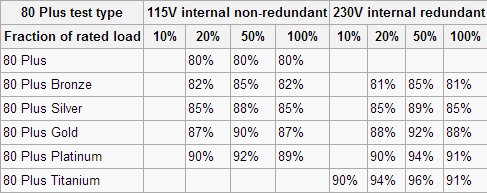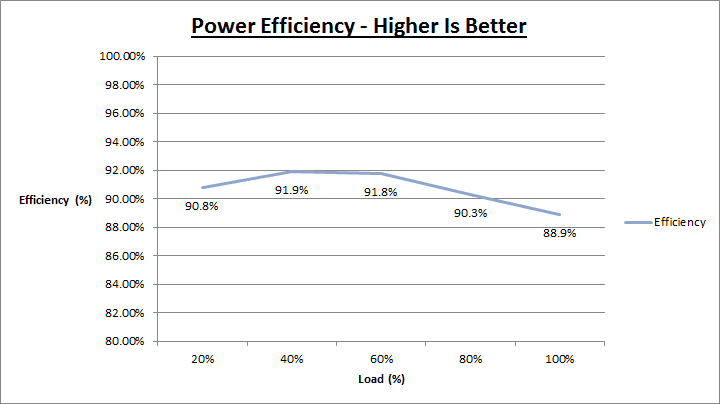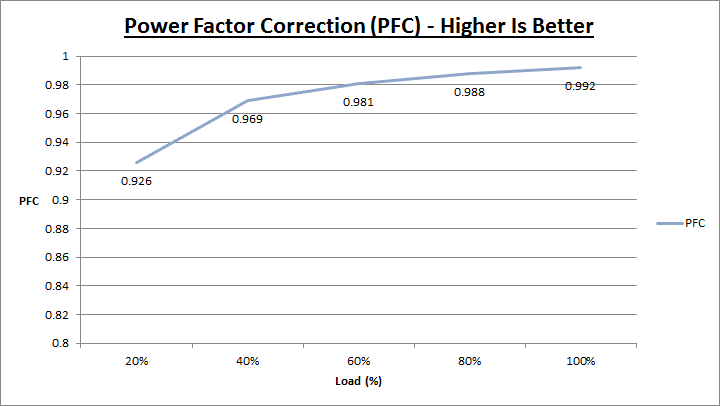BitFenix Fury 750G Semi-Modular Power Supply Review
Ryan Martin / 10 years ago
Efficiency, PFC and Voltage Regulation
Voltage Regulation
To test voltage regulation we load the power supply to five different load scenarios that give an equal spread of load across every single rail. So that means 20% on all rails, 40% on all rails and so on. We then calculate the average deviance of each rail from its expected voltage.

Voltage regulation is good on the whole but 3.3 volt performance could be a little better: it does droop at higher loads. The minus 12 volt rail performance is terrible, thankfully this rail is more or less redundant on any modern system.
Power Efficiency
Power efficiency is measured by calculating actual supplied wattage divided by the wattage drawn at the wall/plug, multiplied by 100 to give a percentage. We then compare that to the particular 80 Plus certification the company claims to see if it meets that. You can see the 80 Plus certifications below, we always test 230v power supplies.


The 80 Plus Gold certification is easily met with a little extra efficiency than needed at 20 and 100% loads.
Power Factor Correction
Power Factor Correction is the ratio of the real power flowing to the load, to the apparent power in the circuit. The aim of PFC is to make the load circuitry that is power factor corrected appear purely resistive (apparent power equal to real power). In this case, the voltage and current are in phase and the reactive power consumption is zero. The closer the number to one the better as this allows the most efficient delivery of electrical power (Source – Wikipedia).

PFC performance is very strong and is among the best we’ve seen.



















